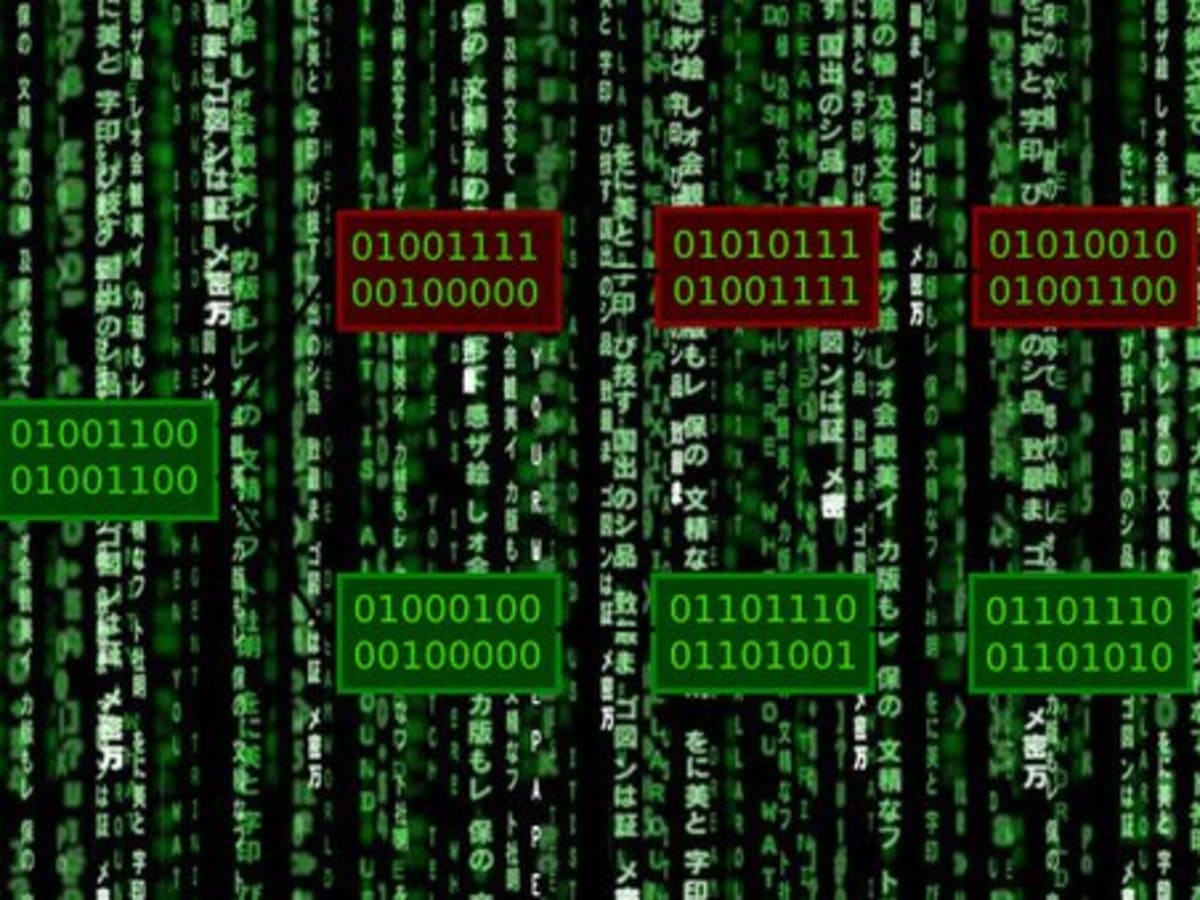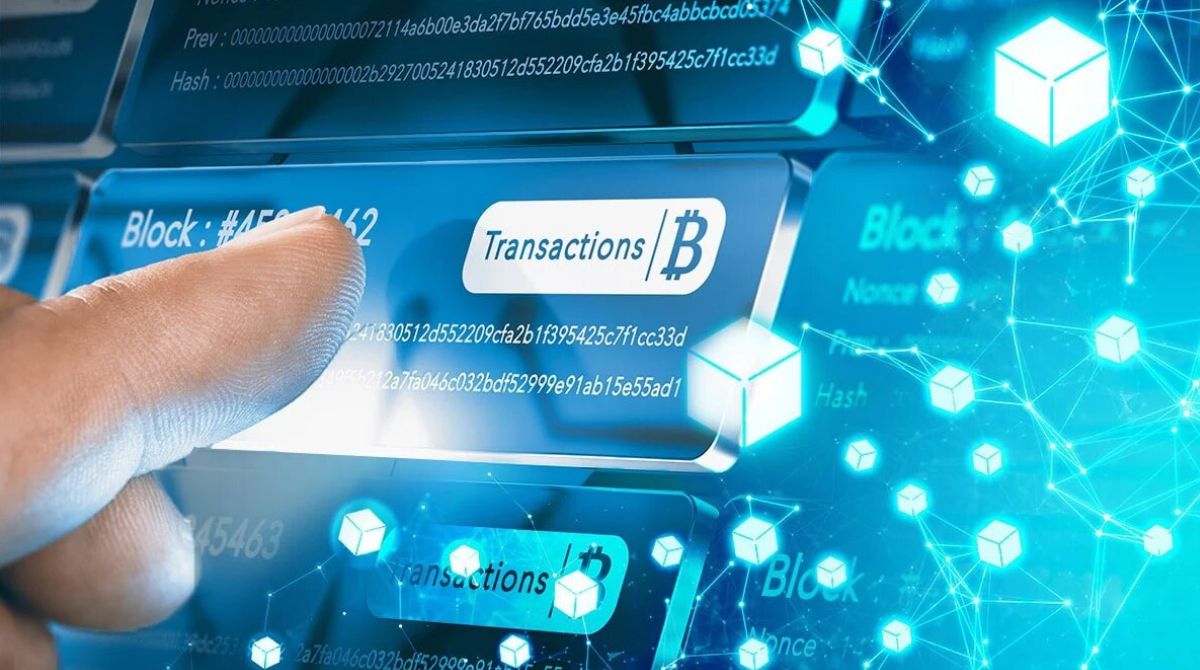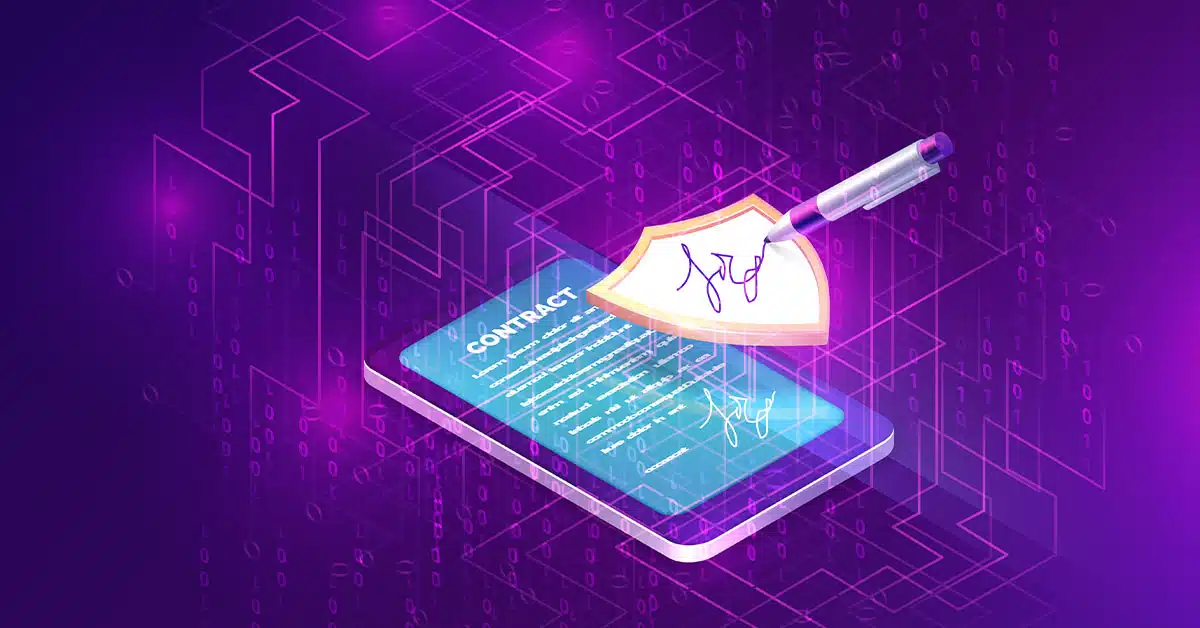Introduction
Blockchain technology has taken the world by storm, revolutionizing various industries by introducing decentralized and transparent systems. At the heart of this technology lies the concept of transactions. Blockchain transactions are the backbone of any blockchain network, enabling the transfer of digital assets, recording of data, and executing smart contracts.
Understanding how to read blockchain transactions is crucial for individuals and businesses looking to navigate the world of cryptocurrencies and blockchain-based platforms. By deciphering the details of a transaction, you can gain valuable insights into the movement of digital assets, transaction fees, and the overall health of the network.
In this article, we will explore how to read blockchain transactions, step by step, providing you with the knowledge and skills to effectively analyze and interpret transaction data. Whether you are a cryptocurrency enthusiast, a blockchain developer, or simply curious about the inner workings of this revolutionary technology, this guide will serve as your roadmap to understanding the intricacies of blockchain transactions.
From identifying the transaction ID and deciphering input/output details to analyzing transaction fees and verifying confirmations, we will cover it all. By the end of this guide, you will have a solid foundation to navigate and comprehend blockchain transactions with ease.
So without further ado, let’s dive into the fascinating world of blockchain transactions and unlock the secrets held within the decentralized ledger.
What is a Blockchain Transaction?
A blockchain transaction is a record of the transfer of digital assets or information on a blockchain. It is a fundamental building block of blockchain technology, as it allows users to exchange value or data in a secure and transparent manner.
Unlike traditional financial transactions, which rely on intermediaries such as banks or payment processors, blockchain transactions operate on a decentralized network. This means that transactions are validated and recorded by a network of computers, known as nodes, rather than a single centralized authority.
Each blockchain transaction has several key components, including:
- Transaction ID: A unique identifier that distinguishes one transaction from another.
- Inputs: The source of the digital assets being transferred. This can be a previous transaction output or newly created coins.
- Outputs: The destination of the digital assets being transferred. This can be a recipient’s address, a smart contract, or a change address for the remaining balance.
- Transaction Fee: A small amount paid by the sender to incentivize network participants to validate and include the transaction in the blockchain.
- Timestamp: The date and time when the transaction occurred.
Blockchain transactions are secured using cryptographic techniques, making them tamper-proof and ensuring that the integrity of the data is maintained. Once a transaction is confirmed and added to the blockchain, it becomes a permanent part of the public ledger, visible to anyone with access to the blockchain network.
Blockchain transactions are not limited to financial transactions. They can also be used to record ownership of assets, voting records, supply chain data, and more. The versatility of blockchain technology allows it to be applied to various industries and use cases, offering transparency, efficiency, and security.
Now that we have a basic understanding of what a blockchain transaction is, let’s explore how to find and read transactions on a blockchain network.
How to Find Blockchain Transactions
Finding blockchain transactions can be done through blockchain explorers, which are online tools that allow users to search and view transactions on a particular blockchain network. These explorers provide a user-friendly interface to access transaction details and explore the transaction history of a specific address or transaction ID.
To find blockchain transactions, follow these steps:
- Choose a Blockchain Explorer: There are several blockchain explorers available for different blockchain networks. Popular ones include Etherscan for Ethereum, Blockchain.com for Bitcoin, and Blockchair for multiple blockchains.
- Access the Blockchain Explorer: Open the selected blockchain explorer in your web browser.
- Enter the Transaction Details: In the search bar provided on the explorer’s website, enter the transaction ID, wallet address, or block number associated with the transaction you want to find.
- Explore the Transaction Details: Once you have entered the relevant information, the blockchain explorer will display the transaction details. This includes the transaction ID, block height, timestamp, inputs, outputs, and transaction fee.
Blockchain explorers also provide additional information such as the current block height, the number of confirmations a transaction has received, and the overall network activity. This can be helpful in understanding the status and health of the blockchain network.
By using a blockchain explorer, you can easily trace the flow and history of transactions on the blockchain. This transparency is one of the key benefits of blockchain technology, allowing anyone to verify and audit transactions without relying on a central authority.
Now that you know how to find blockchain transactions, let’s delve into the details of interpreting transaction IDs.
Understanding the Transaction ID
The transaction ID, also known as the TXID, is a unique identifier that distinguishes one transaction from another on a blockchain. It serves as a reference point to retrieve and verify transaction details.
A transaction ID is typically a long alphanumeric string, generated using cryptographic hashing algorithms. It is derived from the transaction data, including the inputs, outputs, and other transaction-specific information. As a result, even a minor change in the transaction data will produce a completely different transaction ID.
Each blockchain network has its own format for transaction IDs. For example, in Bitcoin, transaction IDs are represented as a 64-character hexadecimal string. In Ethereum, they are represented as a 66-character hexadecimal string.
Understanding the transaction ID is crucial for various purposes, such as:
- Verifying transaction authenticity: By comparing the transaction ID on the blockchain with the one received or provided by a party, you can ensure that the transaction has not been tampered with or forged.
- Tracking transaction history: By searching for a specific transaction ID on a blockchain explorer, you can retrieve the full details of a transaction, including its inputs, outputs, timestamps, and confirmations.
- Auditing and analysis: Researchers and analysts often use transaction IDs to study the flow of funds, track market trends, or investigate suspicious activities on the blockchain.
When reading a transaction ID, it is important to note that it is case-sensitive and usually presented as a hexadecimal string. Additionally, some blockchain explorers may provide additional features, such as clickable links or QR codes, to easily access transaction details.
Now that we have a clear understanding of the transaction ID, let’s move on to reading the inputs and outputs of a blockchain transaction.
Reading the Inputs and Outputs
When examining a blockchain transaction, understanding the inputs and outputs is essential to comprehending how digital assets are transferred and distributed within the transaction.
The inputs of a transaction refer to the source of the digital assets being transferred. Each input is associated with a previous transaction output, which acts as the input for the current transaction. In simpler terms, inputs are like the “from” addresses or sources of the funds being sent.
On the other hand, the outputs of a transaction represent the destination of the digital assets being transferred. The outputs specify the recipient’s address or addresses to which the funds are being sent. In some cases, outputs may involve the execution of a specific smart contract as well.
Reading the inputs and outputs of a blockchain transaction provides valuable insights into the flow of digital assets. By examining the inputs, you can trace the history of where the assets originated from and how they have been accumulated over time. This is especially important for cryptocurrencies that are fungible, where knowing the transaction history can affect their value.
Here are a few key points to consider when reading the inputs and outputs:
- Input amounts: Each input has an associated amount or value of digital assets. By summing up the input amounts, you can determine how much has been spent in the transaction.
- Output recipients: The outputs will typically show the recipient’s address or addresses to which the digital assets have been transferred. This information can be useful for confirming the intended recipients of the transaction.
- Change addresses: In some instances, when the input amount is larger than the output amount, a change address is used. This change address acts as a destination for the remaining balance after deducting the transaction amount. It is important to identify the change address to accurately account for the total spending in a transaction.
By examining the inputs and outputs of a transaction, you can gain a clearer understanding of the movement of digital assets on the blockchain. This knowledge is valuable for auditing purposes, tracking the flow of funds, and verifying the legitimacy of transactions.
Next, let’s explore how you can interpret the various details provided within a blockchain transaction.
Interpreting Transaction Details
When analyzing a blockchain transaction, there are several key details that provide valuable insights into the nature and characteristics of the transaction. Understanding and interpreting these transaction details can help in identifying the parties involved, the purpose of the transaction, and the overall transaction flow.
Here are some important transaction details to consider:
- Timestamp: The timestamp indicates the date and time when the transaction was executed. It provides a chronological order to the transactions and allows for analysis of transaction patterns and trends.
- Transaction Size: The transaction size is the total size of the transaction in bytes. This metric is useful for understanding the impact of the transaction on the blockchain network’s resources, such as storage and bandwidth.
- Block Height: The block height refers to the position of the block containing the transaction within the blockchain. It helps in tracking the progress of a transaction and determining the number of confirmations it has received.
- Confirmations: Confirmations indicate the number of blocks that have been added to the blockchain after the block containing the transaction. The higher the number of confirmations, the more secure and irreversible the transaction becomes.
- Transaction Fee: The transaction fee is the amount paid by the sender to incentivize miners or validators to include the transaction in a block. It can vary depending on the network congestion and the priority set by the sender.
In addition to these details, some blockchain explorers provide advanced features, such as the ability to view the transaction in a graphical format, analyze the transaction’s impact on network fees, and track the unspent transaction outputs (UTXOs) associated with the transaction.
Interpreting transaction details allows you to gain a deeper understanding of the transaction’s context, purpose, and implications. It can be particularly useful for analyzing large-scale transactions, identifying patterns or anomalies, and conducting forensic investigations.
Now that we have explored how to interpret transaction details, let’s dive into the concept of transaction fees and their significance in blockchain transactions.
Analyzing Transaction Fees
Transaction fees play a crucial role in blockchain transactions as they serve as an incentive for network participants to validate and include transactions in the blockchain. Analyzing transaction fees can provide insights into the cost and efficiency of conducting transactions on a blockchain network.
Here are some key aspects to consider when analyzing transaction fees:
- Fee Calculation: Transaction fees are typically calculated based on the size of the transaction in bytes. Larger transactions that require more space on the blockchain tend to have higher fees.
- Fee Market: In blockchain networks where the transaction capacity is limited, such as Bitcoin, transaction fees act as a competitive market mechanism. Users can choose to pay higher fees to prioritize their transactions, ensuring faster inclusion in the blockchain.
- Network Congestion: During periods of high network activity, transaction fees can increase due to increased competition for block space. Analyzing transaction fees can help identify optimal times to transact and avoid paying excessive fees.
- Economic Incentive: Transaction fees serve as an economic incentive for miners or validators to dedicate computational resources to secure the network. Analyzing transaction fees provides insights into the level of economic activity and miner participation on the blockchain network.
- Fee Structure: Some blockchain networks have a dynamic fee structure that adjusts based on network conditions. Analyzing transaction fees helps in understanding how the fee structure is designed and how it impacts transaction costs.
By analyzing transaction fees, you can make informed decisions regarding transaction priority, timing, and costs. It is essential to strike a balance between paying a reasonable fee to ensure timely inclusion in the blockchain and avoiding excessively high fees that could erode the value of the transaction.
Blockchain explorers often provide information on transaction fees, including the fee amount, fee rate, and fee per byte. This data can assist in comparing transaction fees across different transactions and gaining insights into the fee structure of the blockchain network.
Now that we have explored the analysis of transaction fees, let’s delve into the concept of segregated witness transactions and their significance in blockchain networks.
Identifying Segregated Witness Transactions
Segregated Witness (SegWit) is a protocol upgrade implemented in certain blockchain networks, such as Bitcoin, to improve transaction capacity and reduce transaction fees. Identifying SegWit transactions is essential for understanding the impact of this upgrade and its usage within the blockchain network.
Here are some methods to identify Segregated Witness transactions:
- Transaction Format: SegWit transactions have a distinct transaction format. Traditional non-SegWit transactions use a scriptSig field to store the unlocking script, while SegWit transactions use a witness field to store this information.
- Transaction Size: SegWit transactions are generally smaller in size compared to non-SegWit transactions because the witness data is stored outside of the main transaction structure. Analyzing the transaction size can provide clues about the presence of SegWit.
- Witness Data: In SegWit transactions, witness data is separated from the transaction inputs and is not included in the transaction’s hash. Examining the raw transaction data can help identify the presence of witness data.
- Blockchain Explorers: Many blockchain explorers indicate whether a transaction is SegWit or non-SegWit. By searching for a specific transaction on a blockchain explorer, you can easily determine if it is a SegWit transaction.
Identifying SegWit transactions is useful for several reasons:
- Transaction Fee Savings: SegWit transactions often have lower fees compared to non-SegWit transactions due to their smaller size. Recognizing SegWit transactions allows users to leverage lower transaction fees.
- Network Scalability: SegWit improves the capacity of the blockchain network by increasing the number of transactions that can be included in each block. Identifying SegWit transactions helps gauge the adoption and impact of this upgrade on network scalability.
- Compatibility: Some services and wallets may have limited support for SegWit transactions. Identifying SegWit transactions allows users to ensure compatibility with their preferred wallets and services.
By identifying and understanding SegWit transactions, users can take advantage of the benefits offered by this protocol upgrade and make informed decisions regarding transaction fees and network usage.
Now that we have explored Segregated Witness transactions, let’s move on to verifying transaction confirmations.
Verifying Transaction Confirmations
Transaction confirmations are an essential aspect of blockchain transactions, providing assurance that a transaction has been recorded and secured in the blockchain. Verifying transaction confirmations helps ensure the finality and integrity of transactions on the blockchain network.
Here’s how you can verify transaction confirmations:
- Block Height: Each block in the blockchain has a unique height that represents its position within the blockchain. When a transaction is included in a block, you can verify the block height to determine the number of confirmations it has received.
- Blockchain Explorer: Use a blockchain explorer to search for the transaction and view its confirmations. The explorer will display the block height and the number of confirmations, indicating the level of security and finality the transaction has achieved.
- Block Time: Each block has a timestamp that indicates when it was added to the blockchain. By comparing the block time to the time of your transaction, you can estimate the time it took for the transaction to receive a certain number of confirmations.
The number of confirmations required to consider a transaction as fully confirmed depends on the blockchain network and the level of security you require. In general, as the number of confirmations increases, the possibility of a transaction being reversed or altered decreases significantly.
Verifying transaction confirmations is crucial for several reasons:
- Security: Confirmations ensure that a transaction is securely recorded in the blockchain, making it resistant to tampering and double-spending attacks.
- Finality: Confirmations indicate the irreversible nature of a transaction. Once a transaction has received a sufficient number of confirmations, it is considered final and cannot be easily reversed.
- Transaction Confidence: The number of confirmations a transaction has received provides an indication of its reliability. Higher numbers of confirmations offer greater confidence that a transaction is legitimate and valid.
It’s important to note that the time taken for a transaction to receive confirmations can vary depending on the blockchain network’s block time and congestion levels. In some cases, transactions with higher fees or priority may receive confirmations faster than others.
Verifying transaction confirmations allows you to have peace of mind knowing that your transaction is securely recorded in the blockchain and is highly unlikely to be reversed or altered.
Now that we have explored the process of verifying transaction confirmations, let’s conclude our journey through reading blockchain transactions.
Conclusion
Understanding and reading blockchain transactions is a valuable skill for anyone interested in cryptocurrencies, blockchain technology, or conducting transactions on decentralized networks. By deciphering the various components and details of a transaction, users can gain insights into the movement of digital assets, transaction fees, network activity, and transaction security.
In this article, we explored the fundamentals of blockchain transactions, including the transaction ID, inputs, and outputs. We learned how to find and interpret transactions using blockchain explorers, uncover the significance of transaction fees, identify Segregated Witness transactions, and verify transaction confirmations.
By grasping these concepts, individuals and businesses can make informed decisions about their transactions, optimize transaction fees, and ensure the security and finality of their transactions on the blockchain. Whether you are tracking market trends, auditing transactions, or verifying the legitimacy of a transaction, the ability to read blockchain transactions is an invaluable skill.
As blockchain technology continues to evolve and disrupt various industries, having a solid understanding of how transactions function and how to interpret their details empowers individuals to navigate this new digital landscape with confidence.
So, armed with the knowledge gained from this guide, venture forth into the world of blockchain transactions and unlock the insights that lie within the decentralized ledger.

























